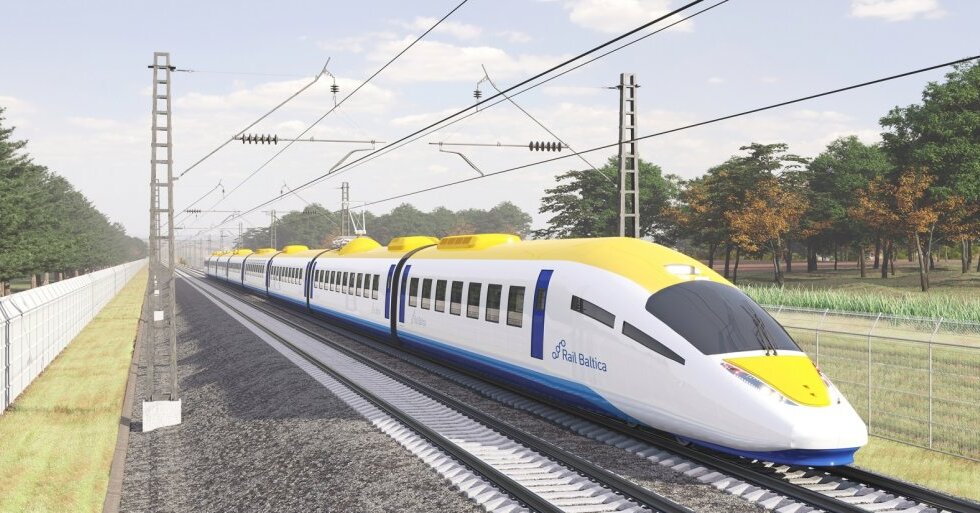“Rail Baltica“The Latvian part of the project will cost much more than the previously planned two billion euros, but how much – none of the responsible parties is even ready to predict,” Latvijas de facto “reports that the costs could approach three billion euros. means that you will have to think about where to take the funds to complete the project.
–
–
Content will continue after the ad
Advertising
–
With the adoption of next year ‘s budget, it is clear that by the end of 2022, more than half a billion euros (1/4 of the initially planned 2 billion) will be spent on the Rail Baltica project in Latvia, but construction of the first track section of the main railway line could start in 2023. This will lead from Riga Airport to the Lithuanian border.
About four years ago, when the idea of Rail Baltica had already acquired a sufficiently clear outline, the responsible officials mentioned the estimated costs – 5.8 billion euros, of which two billion would be paid by the Latvian section.
After 2017, when the initial cost estimate was made, other estimates, such as the two billion already mentioned, are not mentioned. However, the project is overgrown with various additions – it now has, for example, regional stations, multifunctional centers instead of platforms, a railway bridge over the Daugava, combined with a highway. The estimated train speed has also been increased to 249 kilometers per hour. But the construction of the already started Central Station has grown from two hundred to 430 million euros. However, the estimated total costs promise to be adjusted and named no earlier than the end of the design phase.
“Slowly, we put it together, we have pessimistic and optimistic scenarios. But I say we have to put together, complete the design phase, which is scheduled to be completed by the end of 23, and then come with a cost-benefit analysis, which is what which also needs to be updated accordingly, and then there are numbers on which we can already specifically rely, “says”RB Rail“the representative Ģirts Bramans,
The construction of Rail Baltica is financed by applying for funding from the Connecting Europe Facility. Together with the budget co-financing so far, 382 million euros have been raised, next year it will be another 168 million, thus exceeding the limit of half a billion, which is a quarter of everything originally planned. It will be necessary to fight for extra money not only from the already mentioned fund, but also to look for other financing opportunities from other funds. “We agreed that with this shortfall we are going to the next tender, asking for additional money, without asking for additional funds from the state budget. clearer, then, of course, there will be quite a fight [par finansējumu] At European level, “says an adviser to the finance minister Ints Dālderis.
Despite the already spent, the construction of the rails is planned to start only in 2023 – this will be the first section of the main route from Riga Airport to the Latvian-Lithuanian border, which is expected to be completed in 2026.
“We can’t say at the moment, it wouldn’t be fair either – that we will be able to run the whole route completely, or build the whole route, taking into account the existing funding, and taking into account other external conditions. But our goal is to build specific sections that would be useful for the Latvian economy at the same time, they would be operative, there would be train movements, preferably in both freight and passenger transport, “the Minister of Transport tells the program Tālis Linkaits (PUC).
Since the initial estimate of Rail Baltica’s costs, construction prices and costs have risen by 18 percent. And data comparing this and the previous year, as well as forecasting the future, show a relatively rapid increase. On the one hand – it is affected by global developments and could move. On the other hand, if Rail Baltica’s funding starts to be planned only after two years, when the projects paid for by the Recovery Fund will be built in full swing, it may turn out that the industry’s capacity ceiling with all its consequences has been reached unexpectedly.
“I think it would be very, very important at this point to put together the construction projects commissioned by the state precisely, which is why it is timely, even though the industry understands in which direction to grow and whether it is possible to increase human capacity at all. “It is clear that this construction will be booming all over the European Union, and we may not be able to drain resources from elsewhere,” says Baiba Brusbārde, Chief Economist of the Bank of Latvia ‘s Macroeconomic Analysis Department.
In the already concluded construction contracts, as well as in the planned Latvian company responsible for procurement only “European railway lines“Put in formulas that will allow you to regularly index prices to inflation or deflation, if there is one. And changes in costs can be made up to three times a year. This is not too common,” says the customer. from real market data, which ultimately means that it is possible that our agreement will not always be able to keep track of what is really happening in the markets with these rapid bubble changes, assuming that this bubble is not eternal and that the market will stabilize over time. Experience shows that quarterly indexation is a sensible solution, “says Einārs Jaunzems, Director of the Project Implementation and Management Department of the European Railway Line.
According to the Bank of Latvia’s experts, the costs of Rail Baltica could approach 3 billion euros by 2030 – taking into account both the expanded project and the increase in construction costs. The properties to be redeemed for the needs of the track will also have become more expensive.
According to the Estonian supervisory authorities, the cost of the Rail Baltica project in the country could increase by as much as 25-30 percent (300-500 million). In addition, their plans have not changed as much as in Latvia. The European Union’s funding is up to 85 percent, with the rest coming from its own budgets.
–


